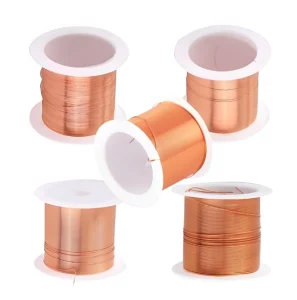
Introduction
Brief Overview of the Importance of Transformer Efficiency
In the realm of electrical engineering, optimizing transformer efficiency stands as a paramount goal. This pursuit not only enhances operational effectiveness but also contributes significantly to energy conservation and cost reduction. Next, let’s discuss optimizing transformer efficiency with winding wires
The Role of Winding Wires in Transformers
Transformer winding wires serve as the fundamental components that facilitate the transformation of electrical energy from one voltage level to another. These wires are meticulously chosen based on factors such as conductivity, thermal stability, and mechanical strength, all of which are crucial for optimizing transformer performance. The selection process ensures that the winding wires can handle the electrical load efficiently while minimizing energy losses due to resistance.
Importance of Transformer Efficiency
Efficiency in transformers plays a pivotal role in the smooth and economical operation of electrical systems. By minimizing energy losses during the conversion of voltage levels, efficient transformers contribute to sustainable energy practices and reduced environmental impact. This makes them indispensable in various sectors, from industrial applications to everyday household electricity usage.
Understanding Transformer Winding Wires
Explanation of What Transformer Winding Wires Are
Transformer winding wires are essential components used in the construction of transformers. These wires are responsible for conducting electrical currents within the transformer, facilitating the transformation of voltage levels from primary to secondary coils. They are typically insulated to prevent short circuits and ensure the efficient transfer of electrical energy.
Different Types of Winding Wires Used in Transformers
Transformers utilize various types of winding wires, each chosen based on specific performance requirements:
Copper Wires: Known for their excellent conductivity and resistance to heat, copper wires are widely preferred for their efficiency in energy transmission. They are suitable for applications where high electrical conductivity and mechanical strength are crucial.
Aluminum Wires: Aluminum winding wires are lighter and more cost-effective than copper wires. While they have lower conductivity compared to copper, they are still widely used in transformers, especially in applications where weight and cost considerations are significant.
Other Materials: In addition to copper and aluminum, transformer winding wires can be made from other materials such as silver or various alloys. These materials are chosen based on specific engineering requirements such as corrosion resistance, magnetic properties, or specialized electrical characteristics.
Importance of Choosing the Right Winding Wire Material
Selecting the appropriate winding wire material is critical for optimizing transformer performance:
Efficiency: The conductivity of the winding wire directly impacts the efficiency of the transformer. High conductivity materials like copper minimize energy losses, ensuring efficient power transmission.
Mechanical Properties: Winding wires must withstand mechanical stresses and environmental conditions without degrading performance. Choosing materials with adequate mechanical strength and durability ensures long-term reliability.
Cost Considerations: While copper offers superior conductivity, aluminum provides a cost-effective alternative. Balancing performance requirements with budget constraints is essential in transformer design and manufacturing.
Application Specifics: Different applications may require specific properties such as thermal stability, resistance to corrosion, or compatibility with specific operating temperatures. Tailoring the choice of winding wire material to these factors enhances overall transformer efficiency and longevity.
Understanding these considerations allows engineers and manufacturers to make informed decisions regarding the selection and use of transformer winding wires, ultimately optimizing transformer performance and reliability in various applications.
Factors to Consider When Selecting Winding Wires
Electrical Requirements of the Transformer
The electrical requirements, including voltage, current, and frequency, dictate the choice of winding wire:
Conductivity: High conductivity materials like copper are preferred for efficient energy transfer and minimal power loss.
Electrical Resistance: Low resistance wires reduce heating during operation, improving overall efficiency.
Insulation Properties: Insulation materials must withstand the electrical stress and prevent short circuits, ensuring safe and reliable operation.
Thermal Performance and Insulation
Effective thermal management is crucial for transformer longevity and performance:
Temperature Rating: Winding wires should withstand the operating temperatures without degradation, ensuring reliable performance over the transformer’s lifetime.
Heat Dissipation: Efficient heat dissipation minimizes thermal stress on the transformer and extends its operational lifespan.
Insulation Quality: Insulation materials must meet regulatory standards and provide sufficient dielectric strength to prevent electrical breakdown.
Cost Considerations
Balancing performance with cost-efficiency is essential:
Material Cost: Copper offers superior conductivity but is more expensive than aluminum. Choosing the right material based on performance requirements and budget constraints is critical.
Installation and Maintenance Costs: Ease of installation and long-term maintenance requirements impact overall cost-effectiveness.